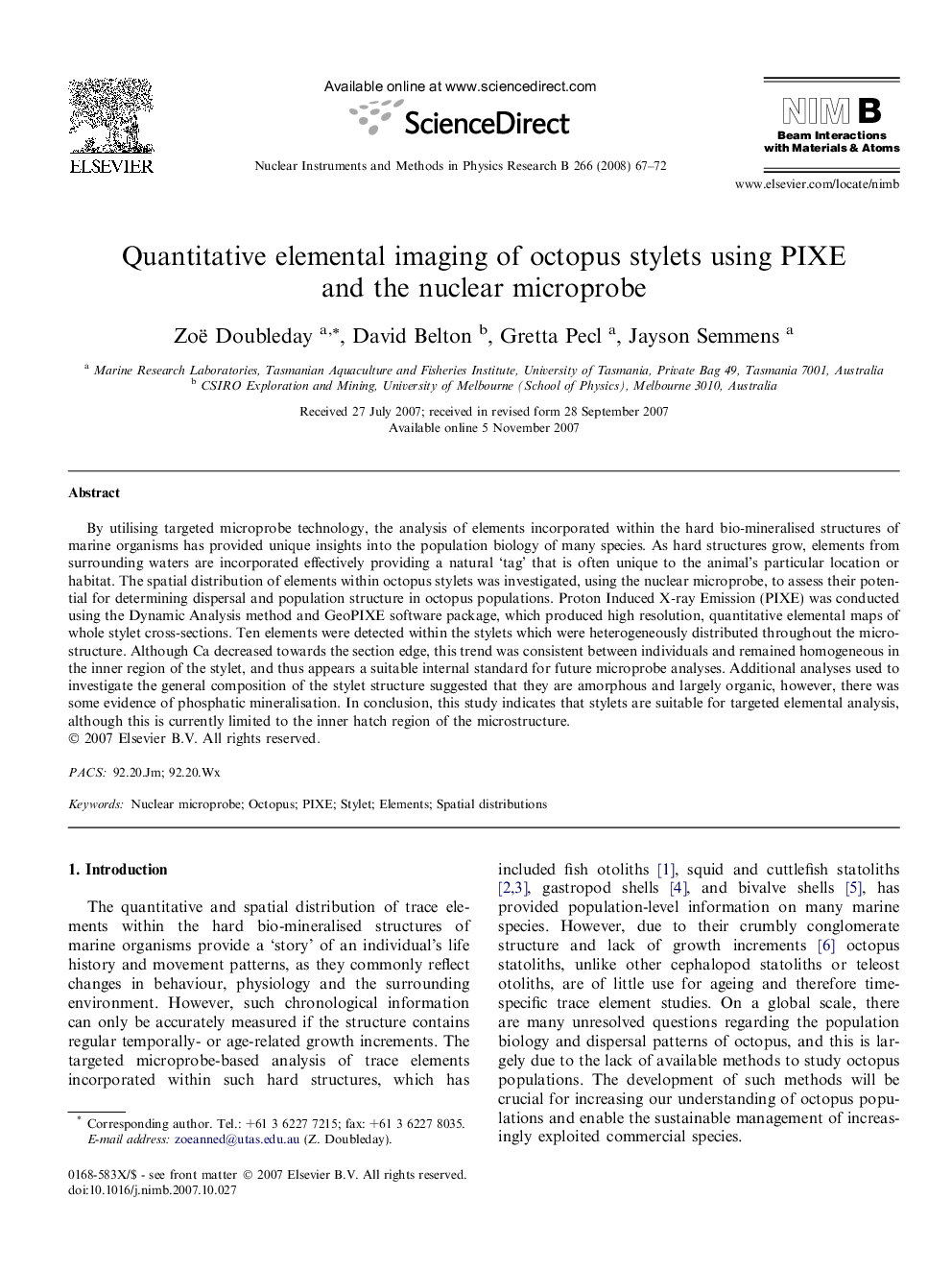| Article ID | Journal | Published Year | Pages | File Type |
|---|---|---|---|---|
| 1686403 | Nuclear Instruments and Methods in Physics Research Section B: Beam Interactions with Materials and Atoms | 2008 | 6 Pages |
Abstract
By utilising targeted microprobe technology, the analysis of elements incorporated within the hard bio-mineralised structures of marine organisms has provided unique insights into the population biology of many species. As hard structures grow, elements from surrounding waters are incorporated effectively providing a natural 'tag' that is often unique to the animal's particular location or habitat. The spatial distribution of elements within octopus stylets was investigated, using the nuclear microprobe, to assess their potential for determining dispersal and population structure in octopus populations. Proton Induced X-ray Emission (PIXE) was conducted using the Dynamic Analysis method and GeoPIXE software package, which produced high resolution, quantitative elemental maps of whole stylet cross-sections. Ten elements were detected within the stylets which were heterogeneously distributed throughout the microstructure. Although Ca decreased towards the section edge, this trend was consistent between individuals and remained homogeneous in the inner region of the stylet, and thus appears a suitable internal standard for future microprobe analyses. Additional analyses used to investigate the general composition of the stylet structure suggested that they are amorphous and largely organic, however, there was some evidence of phosphatic mineralisation. In conclusion, this study indicates that stylets are suitable for targeted elemental analysis, although this is currently limited to the inner hatch region of the microstructure.
Related Topics
Physical Sciences and Engineering
Materials Science
Surfaces, Coatings and Films
Authors
Zoë Doubleday, David Belton, Gretta Pecl, Jayson Semmens,
